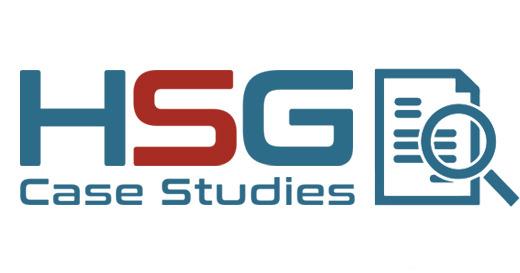Summary
St. Luke’s Hospital in Chesterfield, MO employs over 110 providers in its medical group, and more than 100 more in hospital-based programs. The organization has a long history of close ties with physicians, has experienced substantial growth, and has been ranked as one of the 50 best hospitals in the country on numerous occasions. But the dynamics around physician employment and Value-Based Care are changing the market. Physician leaders and management agreed to work together to develop a shared vision for the group as well as the management infrastructure required to achieve that vision.
Challenge
The St. Luke’s Medical Group is an amalgamation of many different practices in many different specialties and locations. Leadership believes this group needs to become more integrated and function more like a multi-specialty practice, if the organization is to favorably position itself for value-based care.
How HSG Helped
A task force of 14 physicians and 3 executives was assembled to define the medical group’s vision and the organizational structure needed to support that vision.
Interview findings, a self-assessment against best organizational practices, group-specific data analysis, and a St. Louis region market analysis provided the data that drove the process. A total of four task force meetings were facilitated over a 3-month period. The first meeting defined the process, focused on the data and interview findings (more than 20 physicians were interviewed along with a half-dozen executives and managers), and initiated discussion of the general elements that might be included in the vision statement.
The second meeting focused on two elements – a more detailed presentation of local and global industry trends and an in-depth discussion of the potential vision elements. In prompting this discussion, we asked the participants to think about the ideal group; what type of group would the physicians be proud of; how did the group need to evolve to meet the market challenges?
The third meeting centered on a detailed review of the initial vision statement draft and a proposed organizational structure. We also discussed the planned meeting for the entire group, a town hall, which was designed to educate all of the employed providers and solicit input regarding the draft vision statement (presented by task force physicians) and proposed organizational structure (presented by Administration). Utilizing task force members for the group presentation enhanced ownership of the process and outcomes.
The final task force meeting focused on four elements. The first two elements involved finalizing the vision statement and organizational structure by incorporating feedback from the all provider meeting.
The third element of the final meeting was a discussion of the group culture the physicians wished to develop and the parameters around that cultural evolution. The discussion was guided by the results of a detailed survey completed by task force physicians. The goal of the exercise was not to produce a final culture product, but to produce a starting point for the anticipated, new Physician Advisory Council to develop and finalize.
The final element of the meeting was a discussion of potential strategic priorities for the group, which flowed directly from the vision statement.
Results and Impact
Initial implementation efforts focused on Physician Leadership development. Specifically, the organization selected a CMO for the group to work in a dyad relationship with the administrative director. Those individuals jointly chair the Physician Advisory Council (PAC), a second key element of the vision.
Along with management, the PAC owns implementation of the vision. Key elements of that include investments in common EHRs and data analytics, a quality plan that tracks across the continuum and integrates with the inpatient plan, and an emphasis on consistent, positive patient experiences within the medical group – regardless of practice location.
The process is a first step in forging a new level of group function and an enhanced partnership with St. Luke’s Hospital and its associated physicians. The characteristics of that relationship focus on physician engagement, mutual accountability, and a joint commitment to the patients shared by all providers.
Scott Johnson, Vice President & CFO for St. Luke’s, shared his insights to the process, “Taking a methodical, inclusive approach to engaging the physicians in the Medical Group, using an independent consultant, allowed us to work beyond the anticipated challenges of “management” trying to create a leadership structure for the physicians. HSG was able to help us and our Medical Group physicians clarify and codify our understanding of our physician culture and the positive relationship administration already has with our physicians, to help us move ahead with a plan for greater physician involvement in Medical Group leadership. As we establish care coordination infrastructure and engage with our own ACO and CIN’s in the market, a cohesive medical group should make us substantially more responsive and unified in approach.”
To learn more about building a common vision for your employed physicians, contact Terry McWilliams, M.D., Chief Clinical Consultant, at TMcWilliams@HSGadvisors.com or (502) 614-4292.
